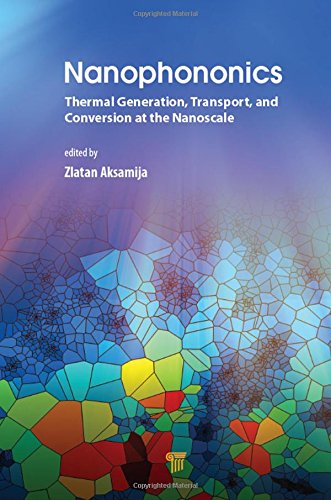

Most ebook files are in PDF format, so you can easily read them using various software such as Foxit Reader or directly on the Google Chrome browser.
Some ebook files are released by publishers in other formats such as .awz, .mobi, .epub, .fb2, etc. You may need to install specific software to read these formats on mobile/PC, such as Calibre.
Please read the tutorial at this link. https://ebooknice.com/page/post?id=faq
We offer FREE conversion to the popular formats you request; however, this may take some time. Therefore, right after payment, please email us, and we will try to provide the service as quickly as possible.
For some exceptional file formats or broken links (if any), please refrain from opening any disputes. Instead, email us first, and we will try to assist within a maximum of 6 hours.
EbookNice Team

Status:
Available4.5
28 reviewsHeat in most semiconductor materials, including the traditional group IV elements (Si, Ge, diamond), III–V compounds (GaAs, wide-bandgap GaN), and carbon allotropes (graphene, CNTs), as well as emerging new materials like transition metal dichalcogenides (TMDCs), is stored and transported by lattice vibrations (phonons). Phonon generation through interactions with electrons (in nanoelectronics, power, and nonequilibrium devices) and light (optoelectronics) is the central mechanism of heat dissipation in nanoelectronics.
This book focuses on the area of thermal effects in nanostructures, including the generation, transport, and conversion of heat at the nanoscale level. Phonon transport, including thermal conductivity in nanostructured materials, as well as numerical simulation methods, such as phonon Monte Carlo, Green’s functions, and first principles methods, feature prominently in the book, which comprises four main themes: (i) phonon generation/heat dissipation, (i) nanoscale phonon transport, (iii) applications/devices (including thermoelectrics), and (iv) emerging materials (graphene/2D). The book also covers recent advances in nanophononics―the study of phonons at the nanoscale. Applications of nanophononics focus on thermoelectric (TE) and tandem TE/photovoltaic energy conversion. The applications are augmented by a chapter on heat dissipation and self-heating in nanoelectronic devices. The book concludes with a chapter on thermal transport in nanoscale graphene ribbons, covering recent advances in phonon transport in 2D materials.
The book will be an excellent reference for researchers and graduate students of nanoelectronics, device engineering, nanoscale heat transfer, and thermoelectric energy conversion. The book could also be a basis for a graduate special topics course in the field of nanoscale heat and energy.